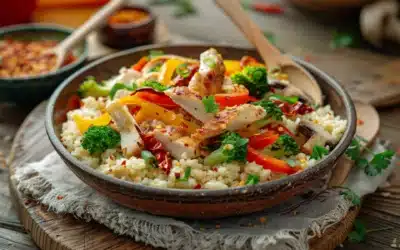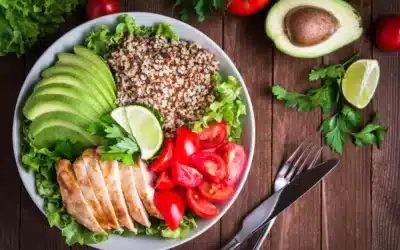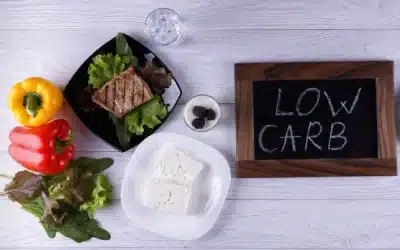In the culinary world, low-carb cooking has transcended being just a diet trend and has become a lifestyle choice for many. “Low-Carb Cooking Tips and Tricks: Elevate Your Meals with Flavorful and Innovative Recipes” aims to guide you through this delightful and healthful way of cooking. Contrary to popular belief, low-carb does not mean low-flavor. It opens the door to a world of creative cooking that not only satisfies the palate but also aligns with health and wellness goals.
Low-carb cooking involves reducing carbohydrate intake, particularly from processed and sugary foods, and replacing them with proteins, healthy fats, and fiber-rich vegetables. This approach has been linked with numerous health benefits, including weight loss, improved blood sugar control, and enhanced metabolic health.
This introduction paves the way for a journey through the fundamentals of low-carb ingredients, innovative cooking techniques, exciting recipes, and practical meal prep strategies. Whether you are a seasoned low-carb enthusiast or a newcomer to this dietary style, these tips and tricks will help you transform your meals into nutritious, flavorful, and visually appealing delights.
The Basics of Low-Carb Ingredients
Embarking on a low-carb culinary adventure starts with stocking your pantry with the right ingredients. This section delves into the essentials of low-carb cooking, highlighting ingredients that are both nutritious and conducive to creating a wide array of delicious dishes.
Alternative Flours: Traditional wheat flour is high in carbs, but there are excellent alternatives. Almond flour and coconut flour are popular choices, offering rich flavors and a lower carb count. These flours are versatile and can be used in everything from baking to thickening sauces.
Low-Carb Sweeteners: Satisfying your sweet tooth without the carbs is easier than you think. Natural sweeteners like stevia and erythritol are great substitutes for sugar in baking and cooking, providing the sweetness without the spike in blood sugar.
High-Protein Staples: Protein is a cornerstone of low-carb cooking. Foods like eggs, chicken, fish, and tofu not only provide essential protein but also create a sense of fullness and satisfaction. Incorporating these into your meals ensures balanced nutrition.
Healthy Fats: Fats are crucial in a low-carb diet for flavor and satiety. Avocados, olive oil, and nuts are excellent sources of healthy fats that can enhance your dishes, contributing both to the taste and nutritional profile.
Fiber-Rich Vegetables: Vegetables are integral to low-carb cooking, offering fiber, vitamins, and minerals. Focus on non-starchy vegetables like leafy greens, broccoli, and peppers to add color, texture, and nutrients to your meals.
Understanding and utilizing these ingredients will not only keep your carb count in check but also elevate your cooking with new flavors and textures. These are the building blocks for creating an array of mouth-watering and health-conscious meals.
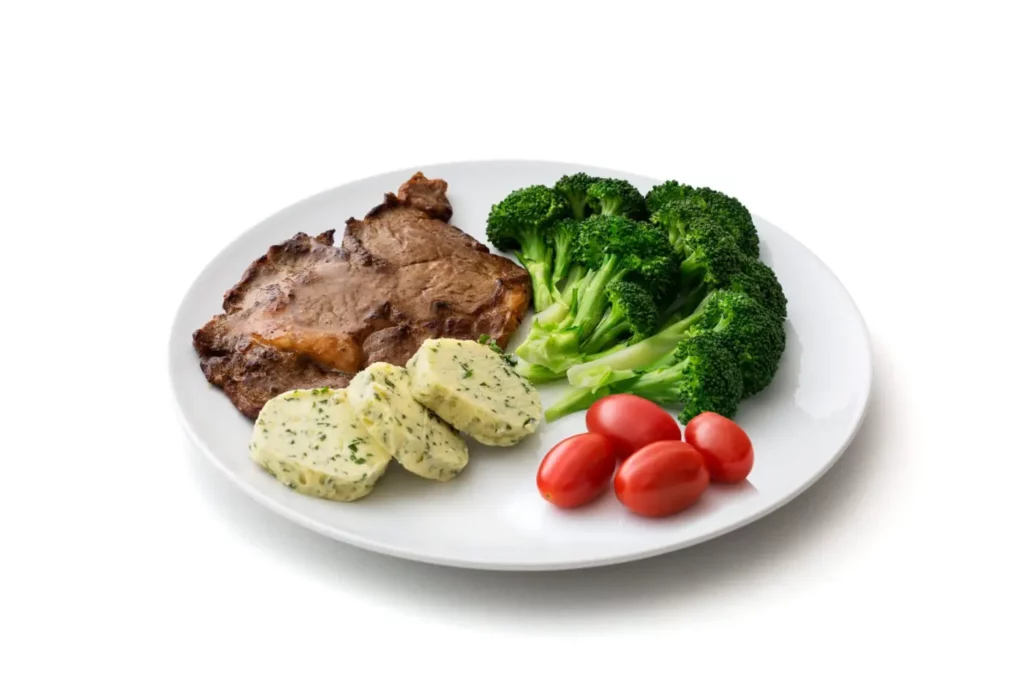
Techniques for Flavorful Low-Carb Meals
Low-carb cooking doesn’t mean you have to compromise on flavor. By employing certain cooking techniques, you can significantly enhance the taste and enjoyment of your meals. This section explores various methods that can elevate your low-carb cooking game.
Roasting for Depth of Flavor: Roasting vegetables and meats is a simple yet effective way to intensify their natural flavors. The caramelization that occurs during roasting adds a rich, deep taste that can transform even the simplest ingredients.
Grilling for Smoky Goodness: Grilling imparts a unique smoky flavor to meats, vegetables, and even some fruits. This technique not only adds an appealing char but also helps in retaining the natural juiciness and nutrients of the ingredients.
Herbs and Spices: The strategic use of herbs and spices can make a world of difference in low-carb cooking. Fresh or dried herbs and a variety of spices can add complexity and layers of flavor without adding any carbs.
Sauces and Dressings: Create your own low-carb sauces and dressings using ingredients like olive oil, vinegar, mustard, and herbs. These can add bursts of flavor to your dishes without the added sugars and carbs found in many store-bought versions.
Slow Cooking and Braising: These methods are excellent for tenderizing tougher cuts of meat while infusing them with flavor. Slow cooking and braising allow the ingredients to absorb the aromas and tastes of the herbs and spices, resulting in richly flavored, satisfying dishes.
By mastering these techniques, you can ensure that your low-carb meals are not just healthy but also brimming with delicious flavors.
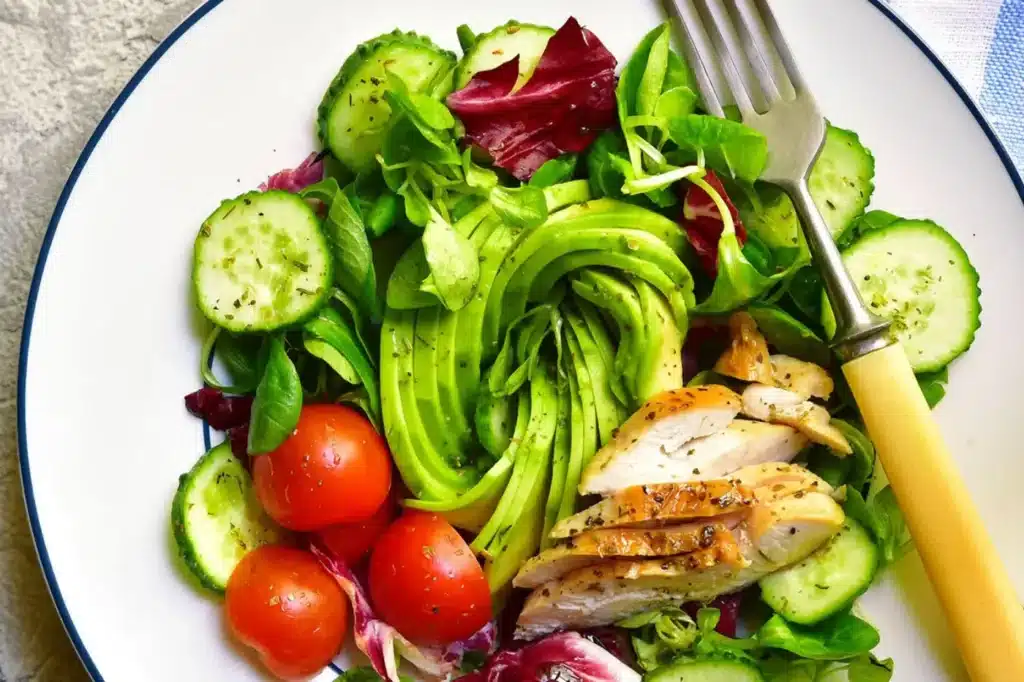
Meal Planning and Prepping for a Low-Carb Diet
Adopting a low-carb lifestyle is more than just choosing the right foods; it’s also about planning and preparing meals in a way that fits into your busy schedule. This section provides practical tips for efficient meal planning and preparation on a low-carb diet.
Weekly Meal Planning: Start with planning your meals for the week. This approach helps in maintaining a low-carb diet consistently and avoids the temptation of high-carb options. Include a variety of meals to keep your diet interesting and balanced.
Prepping in Bulk: Prepare ingredients in bulk to save time. Cook proteins like chicken or beef and store them in the fridge. Chop vegetables in advance and keep them ready for quick cooking. This makes it easier to assemble meals on busy days.
Low-Carb Snacks: Plan for low-carb snacks to prevent hunger pangs or cravings. Nuts, cheese, and low-carb fruits like berries are great options to have on hand.
Portion Control: When prepping meals, be mindful of portion sizes. This is important not just for maintaining a low-carb intake but also for overall calorie control.
Flexible Ingredients: Stock your pantry with versatile low-carb ingredients that can be used in multiple recipes. Items like eggs, leafy greens, and avocados can be incorporated into various meals.
Meal planning and prepping are key to staying on track with a low-carb diet. With a little bit of planning, you can ensure that you always have healthy and delicious low-carb options at your fingertips.
The Low Carb Diet is a nutritional strategy that emphasizes reducing the intake of carbohydrates. This dietary approach is known for its potential to help control blood sugar levels, support weight loss, and improve overall metabolic health. By limiting carbs and focusing on foods like lean proteins, vegetables, and healthy fats, individuals may experience better appetite control and more stable energy levels.
Conclusion
“Low-Carb Cooking Tips and Tricks: Elevate Your Meals with Flavorful and Innovative Recipes” has provided a comprehensive guide to mastering the art of low-carb cooking. From understanding the essential ingredients to exploring various cooking techniques, innovative recipes, and practical meal prep strategies, this guide aims to make low-carb cooking an enjoyable and sustainable practice.
The journey through low-carb cooking shows that this style of eating can be both delicious and nutritious, offering a plethora of options that cater to every palate. The key takeaway is that with the right knowledge and a bit of creativity, you can create meals that are not only good for your health but also a delight to your taste buds.
As we conclude, remember that the essence of low-carb cooking lies in its flexibility and adaptability. Whether you’re a seasoned chef or a beginner in the kitchen, these tips and tricks can help you transform ordinary ingredients into extraordinary low-carb meals.








